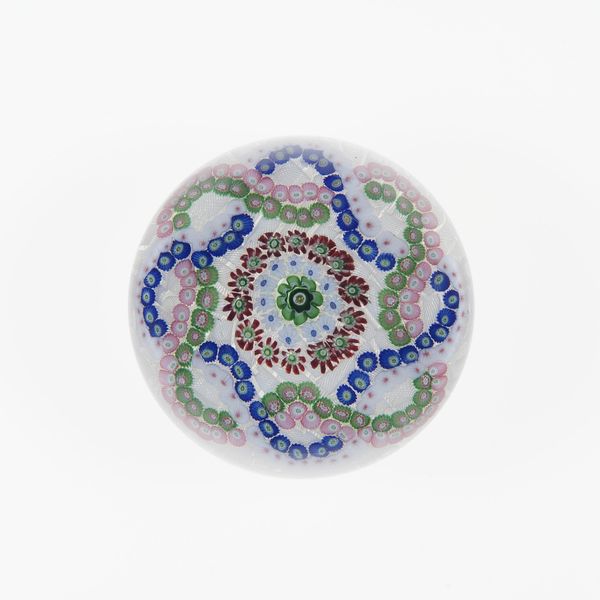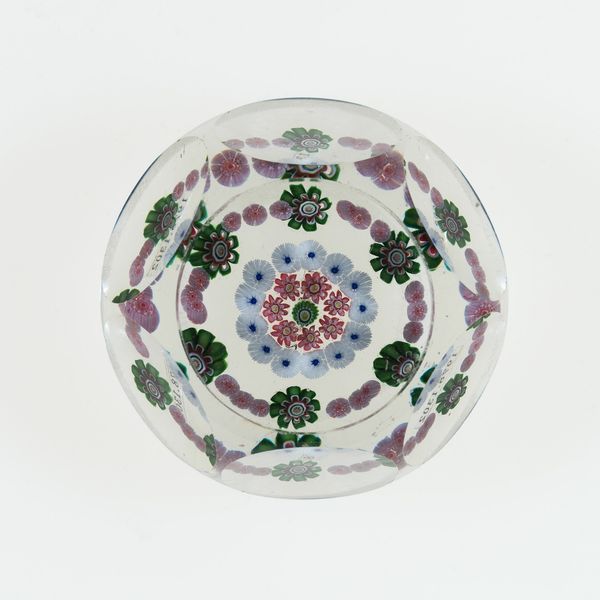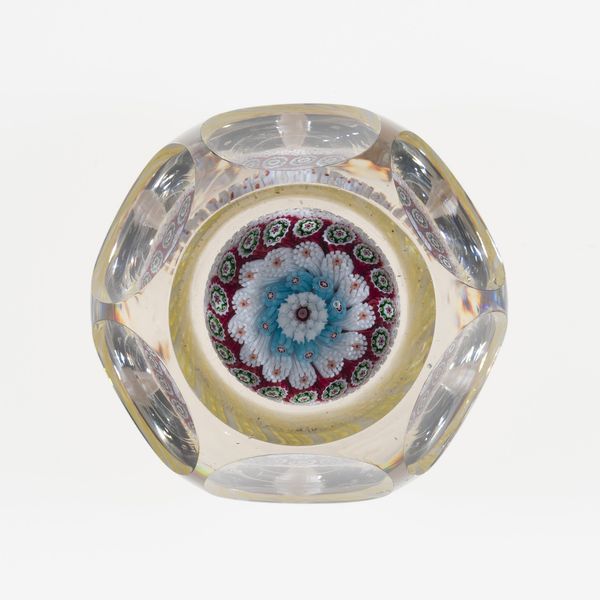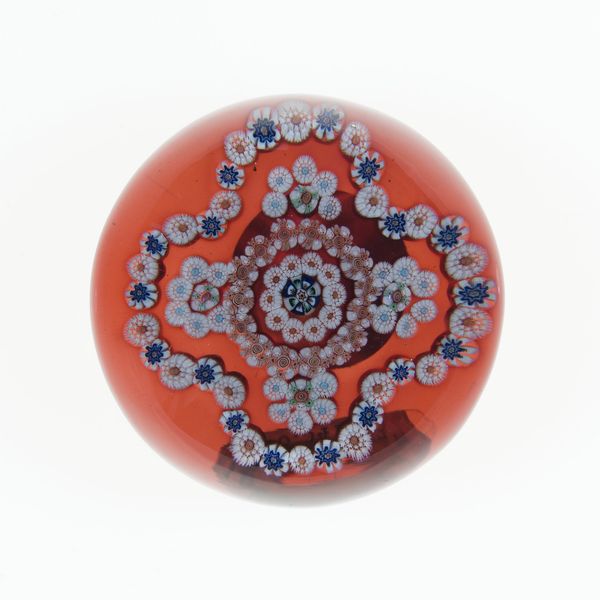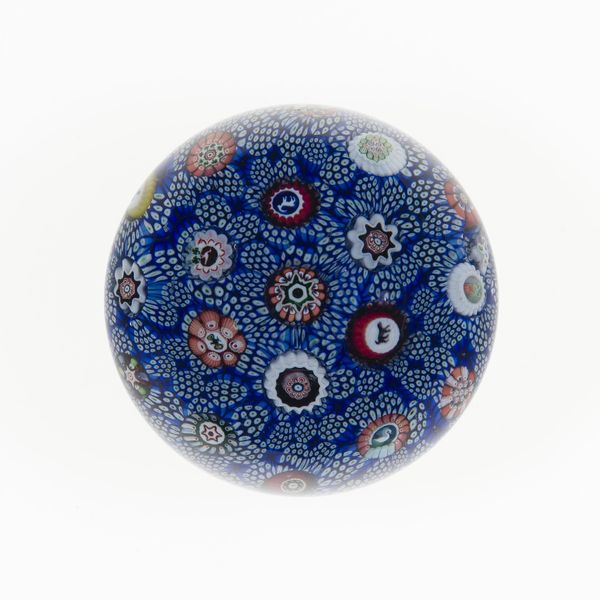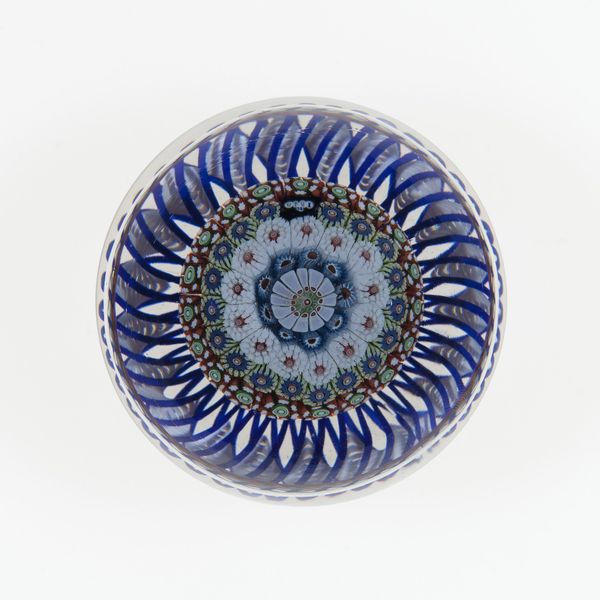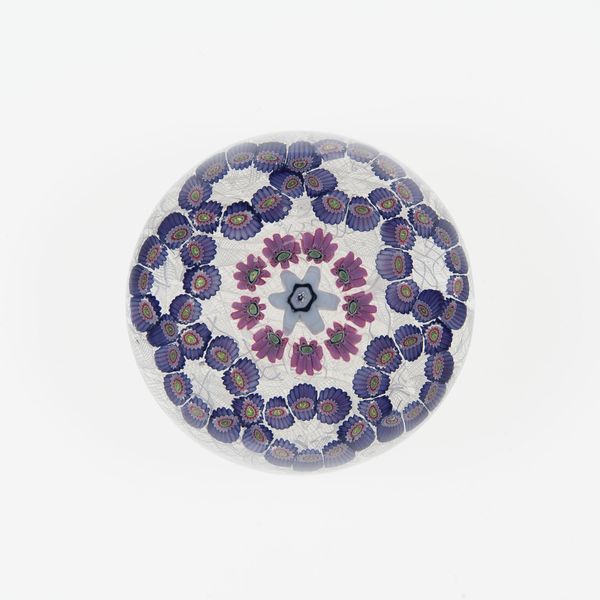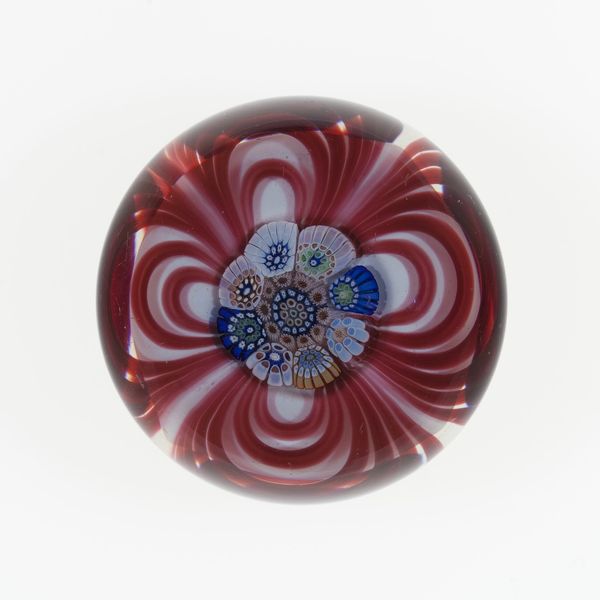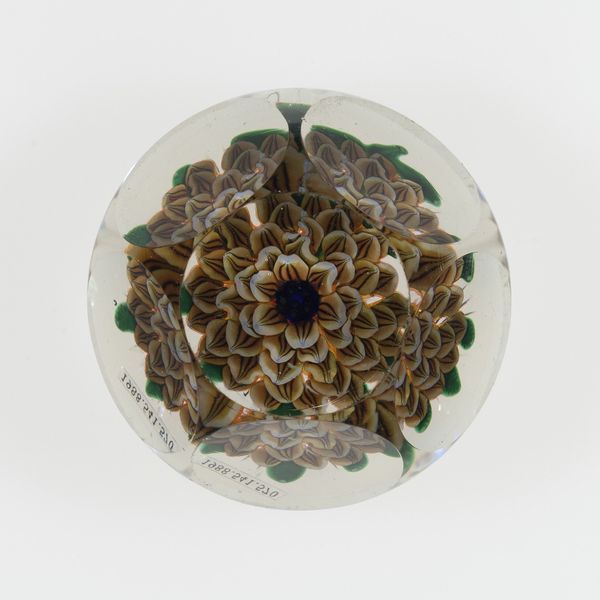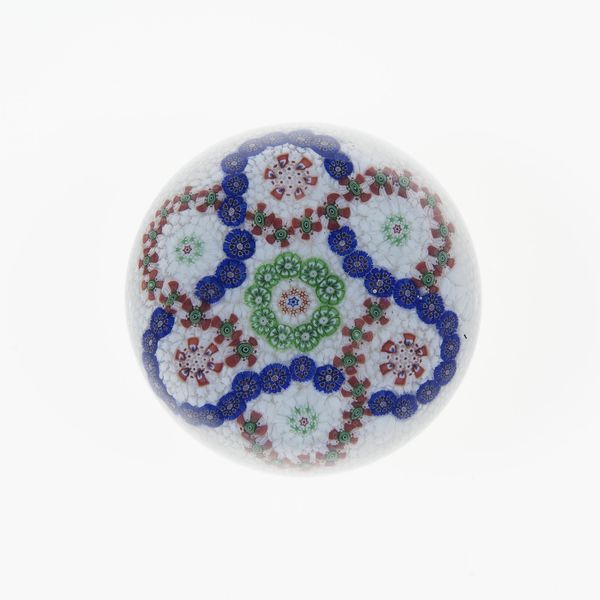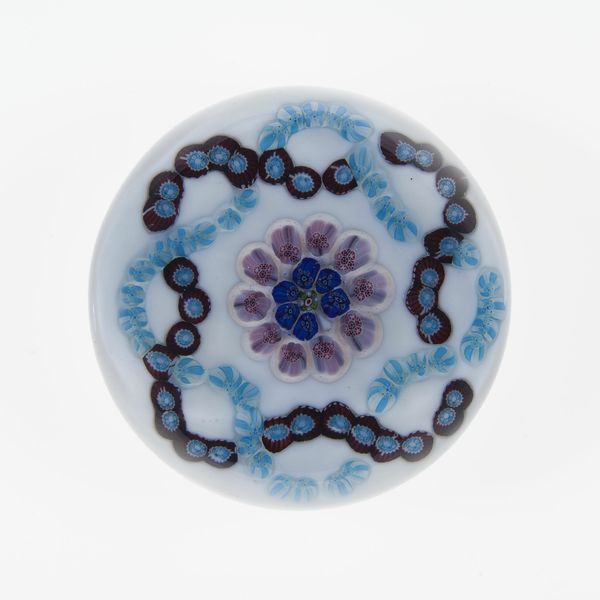
glass
#
glass
#
decorative-art
Dimensions: Diam. 7.3 cm (2 7/8 in.)
Copyright: Public Domain
Curator: Let’s turn our attention to a captivating piece crafted by the New England Glass Company around the 19th century, a glass paperweight residing here at the Art Institute of Chicago. Editor: It feels like looking into a jewel-toned universe, tiny flowers suspended in deep burgundy glass. Almost like pressed botanicals but captured forever in shimmering permanence. It’s mesmerizing! Curator: These decorative objects gained considerable popularity in the mid-19th century, reflecting a renewed fascination with ornamentation. Paperweights transitioned from merely functional items to decorative showpieces for middle and upper class parlors. Editor: I wonder if it was intended to mimic the natural world that way, capturing something ephemeral to then weigh down the more mundane? Holding it makes me think of holding a tiny frozen world in my hand. Is it a portal or prison? Curator: Interesting, the technique involves layering molten glass of various colors and patterns and carefully encasing it within a clear dome. Looking closely at the central design you will see complex 'millefiori' patterns; cross-sections of bundled glass rods fusing intricate floral arrangements. Editor: "A thousand flowers!" is perfect. And you can imagine them arranging each layer, baking the rods. Do you suppose people really kept paper under these or mostly admired them? The weight gives me a sense of groundedness but its visual appeal sets my mind aloft! Curator: They were, I suspect, far more about display and suggesting affluence through intricate craftsmanship and ownership of fashionable objects, so perhaps "eye candy" or tokens of aspiration, so to speak, had a more pronounced role. Editor: So less about utility, and more about "Look what I have!” Still I’d like to hold it longer, to imagine the artisans’ breath holding life into these perfect petals frozen in time. Thanks for this look back at history! Curator: And thank you, as ever, for providing this captivating way of viewing cultural expressions which reveal something, as all objects do, of ourselves.
Comments
No comments
Be the first to comment and join the conversation on the ultimate creative platform.
